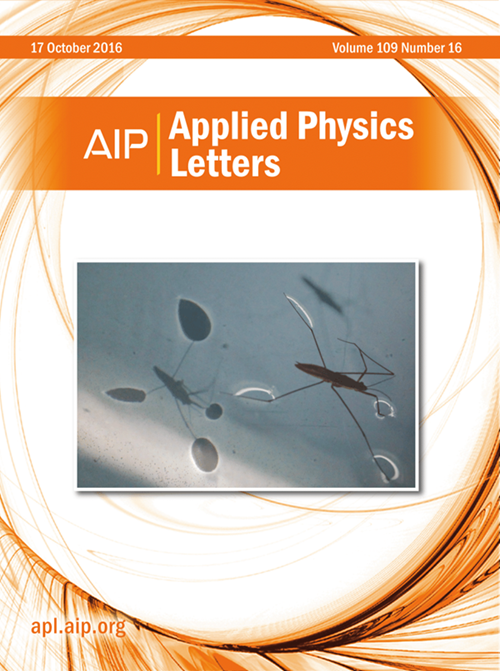柔性纳米环超表面中机械-光学耦合对表面晶格共振的动态调谐
IF 3.5
2区 物理与天体物理
Q2 PHYSICS, APPLIED
引用次数: 0
摘要
柔性超表面包含嵌入在柔软和透明衬底中的亚波长厚纳米颗粒阵列,由于其能够产生可预测、可调和可逆的光学性能,因此引起了重大的研究兴趣。在这项工作中,我们采用电子束光刻结合湿法蚀刻技术,在聚二甲基硅氧烷上制备了正方形或三角形排列的金椭圆纳米环的柔性超表面。在软基板上进行的扫描电镜测试证明了图案转移技术在纳米尺度上的可行性,以及原位光学表征的可靠性。连续监测应变下的反射率,再加上数值模拟和理论分析,揭示了这些超表面有趣的光学行为,包括表面晶格共振中的法诺特征,局部表面等离子共振中的光谱蓝移,以及从紫色到绿色和橙色的颜色变化。通过将具有不同特征的元表面整合成棋盘状图案,我们提出了一种柔性应变图的配置,用于局部表面应变的非接触研究,这也为通过编码应变下的不同共振提供了信息加密的机会。本文章由计算机程序翻译,如有差异,请以英文原文为准。
Dynamic tuning of surface lattice resonances via mechano-optical coupling in flexible nanoring metasurfaces
Flexible metasurfaces comprising arrays of sub-wavelength thick nanoparticles embedded in soft and transparent substrates have attracted significant research interest due to their ability to generate predictable, tunable, and reversible optical performances. In this work, we employ electron beam lithography combined with wet-etching techniques to fabricate flexible metasurfaces of gold elliptical nanorings arranged in square or triangular arrays on polydimethylsiloxane. Scanning electron microscope tests conducted on the soft substrate demonstrate the feasibility of the pattern transfer technique at the nanoscale, as well as the reliability of the in situ optical characterization. Continuous monitoring of reflectance under strain, complemented by numerical simulations and theoretical analysis, reveals intriguing optical behaviors for these metasurfaces, including Fano features in surface lattice resonances, spectral blueshifts in localized surface plasmonic resonances, and color changes from purple to green and orange. By integrating metasurfaces with different characteristics into a chessboard-like pattern, we propose the configuration of a flexible strain map for contactless investigation of localized surface strain, which also provides opportunities for information encryption by encoding the varied resonances under strain.
求助全文
通过发布文献求助,成功后即可免费获取论文全文。
去求助
来源期刊

Applied Physics Letters
物理-物理:应用
CiteScore
6.40
自引率
10.00%
发文量
1821
审稿时长
1.6 months
期刊介绍:
Applied Physics Letters (APL) features concise, up-to-date reports on significant new findings in applied physics. Emphasizing rapid dissemination of key data and new physical insights, APL offers prompt publication of new experimental and theoretical papers reporting applications of physics phenomena to all branches of science, engineering, and modern technology.
In addition to regular articles, the journal also publishes invited Fast Track, Perspectives, and in-depth Editorials which report on cutting-edge areas in applied physics.
APL Perspectives are forward-looking invited letters which highlight recent developments or discoveries. Emphasis is placed on very recent developments, potentially disruptive technologies, open questions and possible solutions. They also include a mini-roadmap detailing where the community should direct efforts in order for the phenomena to be viable for application and the challenges associated with meeting that performance threshold. Perspectives are characterized by personal viewpoints and opinions of recognized experts in the field.
Fast Track articles are invited original research articles that report results that are particularly novel and important or provide a significant advancement in an emerging field. Because of the urgency and scientific importance of the work, the peer review process is accelerated. If, during the review process, it becomes apparent that the paper does not meet the Fast Track criterion, it is returned to a normal track.
 求助内容:
求助内容: 应助结果提醒方式:
应助结果提醒方式:


